42 rock cycle
The Rock Cycle, Processes, Transition and Chart - Geology Science The rock cycle basic definiton is transitions among the three main rock types, which are metamorphic, igneous and sedimentary rocks. Each of the rocks can be altered when they are force out equilibrium conditions.The rock cycle describes how the three rock types are interrelated and how processes change from one to another over time. Rock Cycle: Definition, Types, Process - Collegedunia Jun 23, 2022 · The rock cycle is a circular process that has no beginning or end. The igneous rocks are the preliminary rocks, they can change into metamorphic or sedimentary rocks. When crystallizing & re-organization of minerals occur in a rock, the process I called metamorphism. The sedimentary rocks are formed from the small pieces of rocks minerals.
The rock cycle - KS3 Chemistry Revision - BBC Bitesize The rocks are gradually recycled over millions of years. This is called the rock cycle. For example, sedimentary rocks can be changed into metamorphic rocks. These can be weathered, eroded, and the...

Rock cycle
Rock Cycle, Free PDF Download - Learn Bright Rock Cycle is a fun lesson that teaches students about the three types of rock. The lesson provides details about each type of rock and describes each step of the cycle. Students will also learn about weathering and erosion and how they affect rocks. The "Options for Lesson" section provides a lot of additional suggestions. Rock Cycle For Kids | What Is The Rock Cycle | DK Find Out During the rock cycle, rocks form deep in the Earth, move and sometimes change, go up to the surface, and eventually return below the ground. The three main kinds of rock are igneous, sedimentary, and metamorphic. Each type of rock moves around the cycle in different ways. Cycle begins again Volcanic The rock cycle Heating Intense heating Settling Rock cycle - Understanding Global Change What is the rock cycle? Rocks can be: (1) made of minerals, each of which has a specific crystal structure and chemical composition; (2) made of pieces of other rocks; (3) glassy (like obsidian); or, (4) contain material made by living organisms (for example coal, which contains carbon from plants).
Rock cycle. What Is The Rock Cycle: Definition, Diagram, And Examples Dec 12, 2017 · The rock cycle is a concept of geology that describes the transition of rocks between the three rock types: igneous, sedimentary, and metamorphic. The cycle outlines how each rock type can be converted to another rock type through geologic processes. What is the rock cycle? Most of us think of rocks as objects which don’t change. Rock Cycle | Transition to Igneous, Metamorphic, Sedimentary ... The Rock cycle is a basic concept in geology that describes the time-consuming transitions through geologic time. Rocks are constantly being recycled and going through several processes of chemical and physical changes. There are three main rock types: Sedimentary Metamorphic Igneous Rock Cycle: Steps Involved In Rock Cycle - Turito - US Learn The processes included in the rock cycle are melting, cooling, heating, weathering, erosion, heat, and pressure. Weathering is the process in which rock is broken down into smaller pieces by the effect of wind, water and change in temperature. Erosion is the process in which weathered rock is transported from one place to another by wind, water ... The Rock Cycle | Sedimentary, Metamorphic, Igneous - YouTube Magnificent Mountains! Colourful Cliffs! Brilliant Boulders! Rocks make up most of our planet but what even are they? Where do they come from? And how are th...
What is The Rock Cycle? Process Steps with Diagram - Civil Engineering " Rock cycle is the process that completely portrays the complex and interconnected transformation of rock from one category to another. " The Rock Cycle The rock cycle diagram clearly shows all the steps, components of the rock cycle including the end results and the movement of the process. PDF Rock Cycle Factsheet - The Geological Society THE ROCK CYCLE WHAT ARE ROCKS? Rocks on the Earth's surface are gradually broken down into smaller pieces by water, ice, wind, plants and animals (known as weathering). These broken up pieces are called sediment and are transported away, or eroded, by rivers, glaciers and wind. Sediments often collect at the Earth Science for Kids: Rocks, Rock Cycle, and Formation - Ducksters The Rock Cycle Rocks are constantly changing in what is called the rock cycle. It takes millions of years for rocks to change. Here is an example of the rock cycle describing how a rock can change from igneous to sedimentary to metamorphic over time. 1. Melted rock or magma is sent to the earth's surface by a volcano. rock | Definition, Characteristics, Formation, Cycle, Classification ... The rock cycle illustrated in Figure 1 reflects the basic relationships among igneous, metamorphic, and sedimentary rocks. Erosion includes weathering (the physical and chemical breakdown of minerals) and transportation to a site of deposition. Diagenesis is, as previously explained, the process of forming sedimentary rock by compaction and ...
The Rock Cycle | National Geographic Society Jul 15, 2022 · The rock cycle is a series of processes that create and transform the types of rocks in Earth’s crust. Grades 5 - 8 Subjects Chemistry, Earth Science, Geology Image Reunion Island Volcano Active volcanoes like this one on Reunion Island—east of Madagascar, in the Indian Ocean—forms a type of igneous rock. The rock cycle — Science Learning Hub As part of the rock cycle, any rock can be changed into one of the other rock types or into a different form of themselves. For example, sedimentary rock can be broken down to form new sedimentary rock, or it may be changed into metamorphic rock. Material does not always go round in a neat sequence, but takes part in a whole network of processes. The Rock Cycle Worksheets - Math Worksheets 4 Kids The Rock Cycle Worksheets. Get ready to rock with our printable rock cycle worksheets curated for the rockhounds in grade 3, grade 4, grade 5, and grade 6. Our Earth is dynamic as it enables rocks to transform into different types of rocks. What Is The Rock Cycle? | Environmental Chemistry | Chemistry ... - YouTube What Is The Rock Cycle? | Environmental Chemistry | Chemistry | FuseSchool FuseSchool - Global Education 655K subscribers Dislike Share 97,420 views Jun 26, 2016 In this video you will learn about...
Rock Cycle Interactive - Annenberg Learner Rock Cycle Interactive. Learn how to distinguish between types of rocks and discover how rocks change over time. Join us for conversations that inspire, recognize, and encourage innovation and best practices in the education profession. Available on Apple Podcasts, Spotify, Google Podcasts, and more.
Rock cycle - Wikipedia The rock cycle is a basic concept in geology that describes transitions through geologic time among the three main rock types: sedimentary, metamorphic, and igneous. Each rock type is altered when it is forced out of its equilibrium conditions.
The Rock Cycle | Earth Science | Visionlearning The rock cycle is the set of processes by which Earth materials change from one form to another over time. The concept of uniformitarianism, which says that the same Earth processes at work today have occurred throughout geologic time, helped develop the idea of the rock cycle in the 1700s. Processes in the rock cycle occur at many different rates.
The Rock Cycle: Igneous, Sedimentary, and Metamorphic Rocks The rock cycle is a continuous process describing the transformation of the rocks through various stages throughout their lifetime. The rock cycle simply moves from the igneous to metamorphic to sedimentary rocks and the process repeats itself over and over. READ: What is a Rock and What are 3 Basic Types of Rocks.
Rock cycle - Simple English Wikipedia, the free encyclopedia The rock cycle is how rocks of one kind change into rocks of another kind. [1] There are three main kinds of rocks: igneous rock, metamorphic rock, and sedimentary rock. Each of these rocks can change into the other kinds by physical processes: cooling, melting, heat, weathering / erosion, compacting (squeezing tightly together), cementing, and ...
Diagram of the Rock Cycle Explained - Rock and Mineral Planet The rock cycle is continuous on our earth. Mountains become flat, sediment pushes along and deeper into the ground, rocks form underground, and magma pushes everything upward again and creates new mountains. This seemingly simple cycle is the foundation of what many geologists would explain as an important reason life existing on our earth.
Rock Cycle: Definition, Formation, Types and Examples - Toppr-guides The Rock Cycle The igneous, sedimentary, and metamorphic rocks when melt again, they form magma. Then the process of melting and cooling to igneous rocks, weathering and eroding of the igneous rocks to sedimentary rocks and application of pressure and heat to form metamorphic rocks again is completed. It forms a cycle which is the rock cycle.
PDF Rocking the Rock Cycle (Part 1 of 3) - NASA Rocks and minerals help scientists decipher things about past periods on our Earth and other planets. The rock cycle helps us understand what conditions helped formed those rocks, which can tell us a lot about the history of a region. The Mars Rover Curiosity uses rocks to try to figure out whether or not Mars had "the right stuff" to support life.
Rock cycle by Jeremy Brunner - Prezi THE ROCK CYCLE First, let's see how IGNEOUS rocks are made. Melted rock is called Magma When magma hardens, it makes Igneous rocks. Most Igneous rocks form underground. Some Igneous rocks form when volcanoes erupt! Not all rocks are Igneous. There's one more way rocks are made.
The Rock Cycle - CliffsNotes The rock cycle is illustrated in Figure . Igneous rocks are produced when molten rock cools and solidifies. When exposed at the earth's surface, the rock is broken down into tiny particles of sediment by weathering and erosion. This weathered material is carried by water or wind to form sedimentary deposits such as beaches, sand bars, or deltas.
Rock cycle - Understanding Global Change What is the rock cycle? Rocks can be: (1) made of minerals, each of which has a specific crystal structure and chemical composition; (2) made of pieces of other rocks; (3) glassy (like obsidian); or, (4) contain material made by living organisms (for example coal, which contains carbon from plants).
Rock Cycle For Kids | What Is The Rock Cycle | DK Find Out During the rock cycle, rocks form deep in the Earth, move and sometimes change, go up to the surface, and eventually return below the ground. The three main kinds of rock are igneous, sedimentary, and metamorphic. Each type of rock moves around the cycle in different ways. Cycle begins again Volcanic The rock cycle Heating Intense heating Settling
Rock Cycle, Free PDF Download - Learn Bright Rock Cycle is a fun lesson that teaches students about the three types of rock. The lesson provides details about each type of rock and describes each step of the cycle. Students will also learn about weathering and erosion and how they affect rocks. The "Options for Lesson" section provides a lot of additional suggestions.
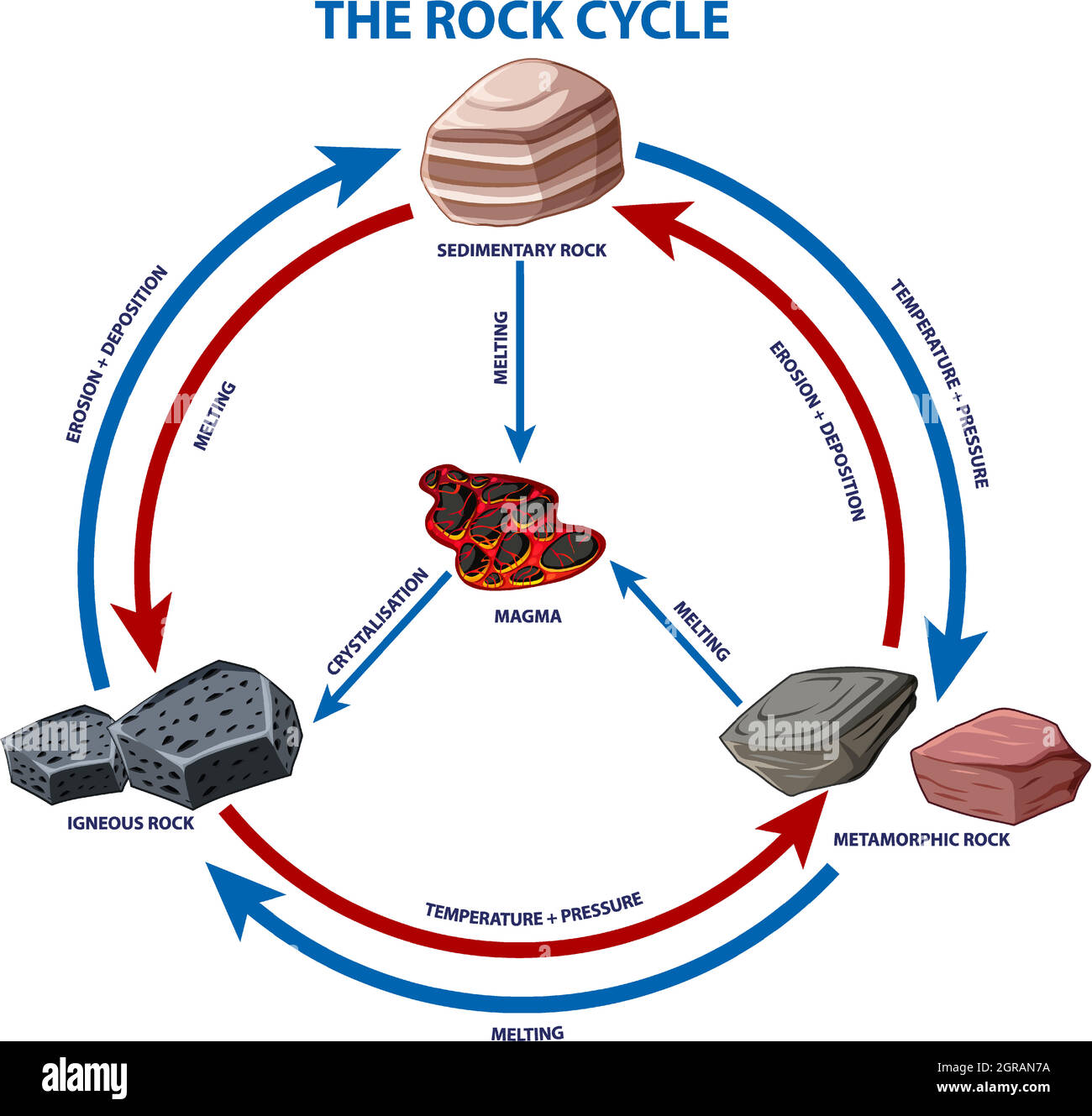






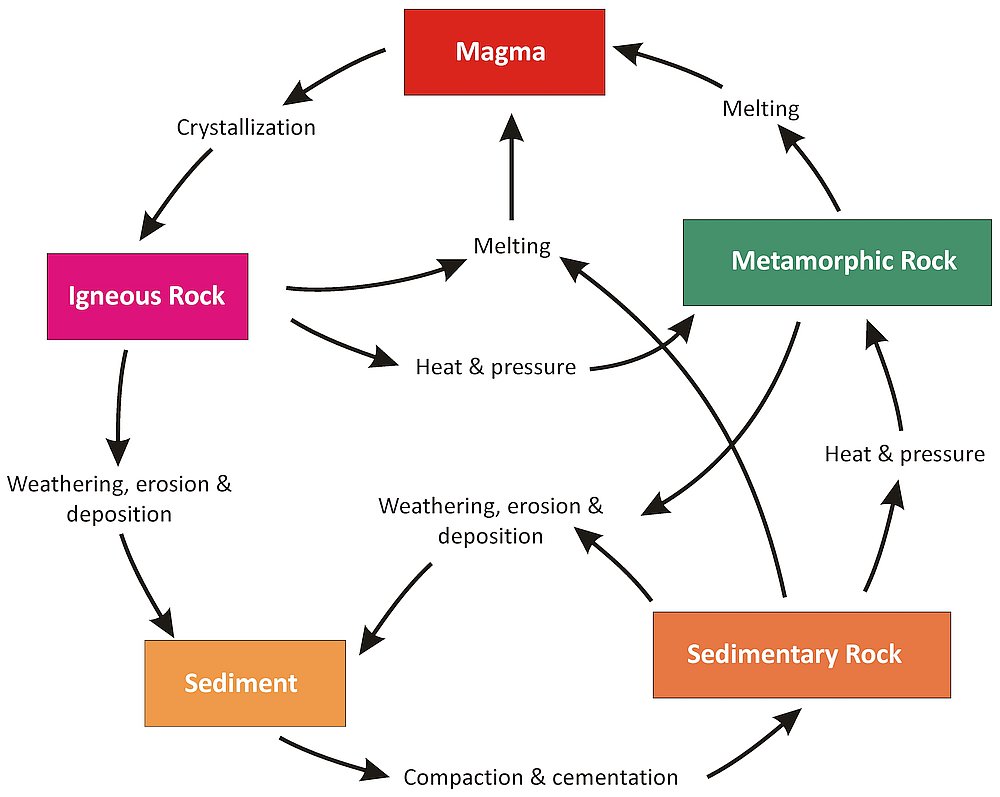




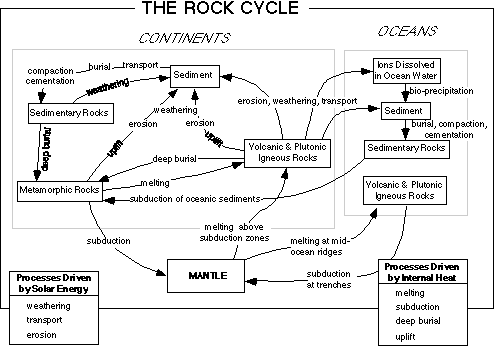
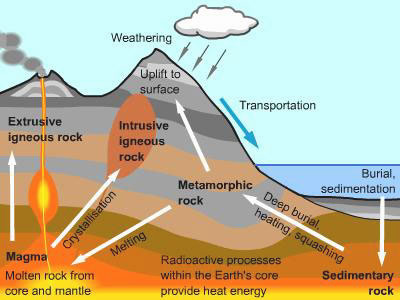
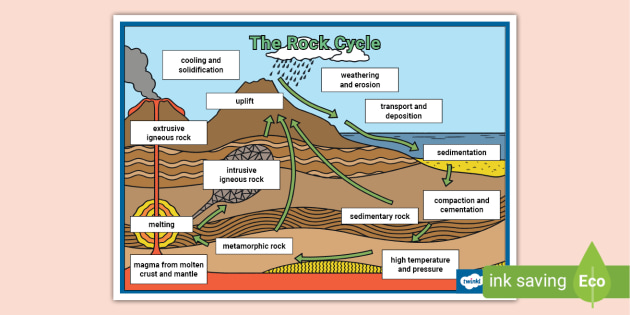

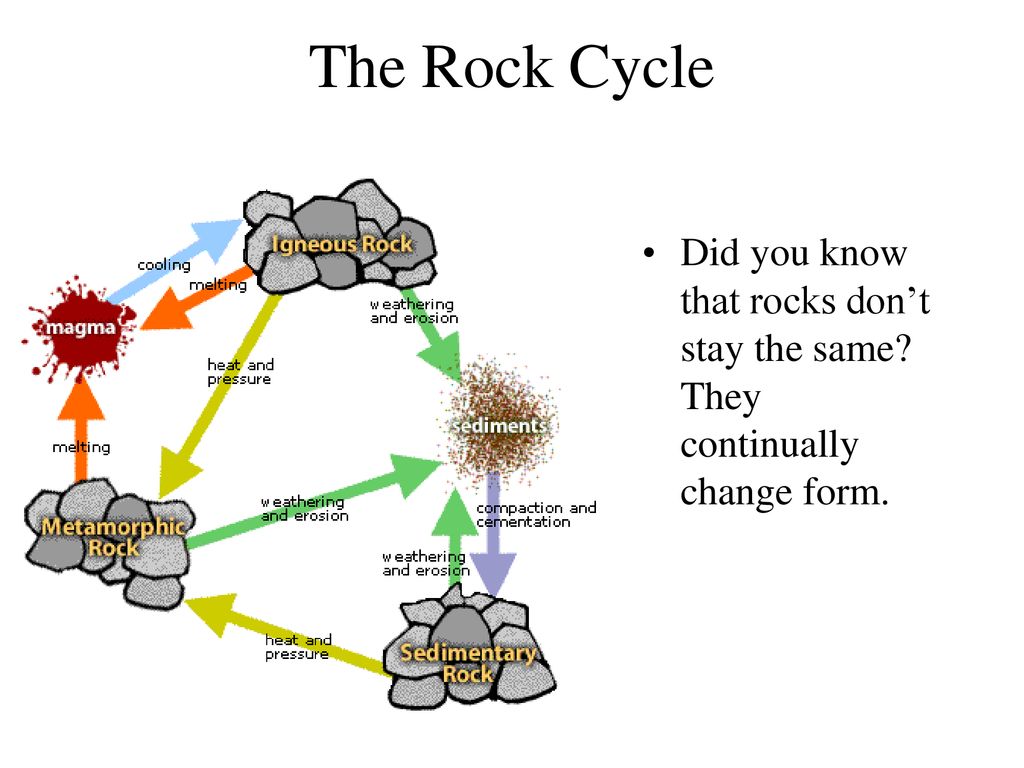

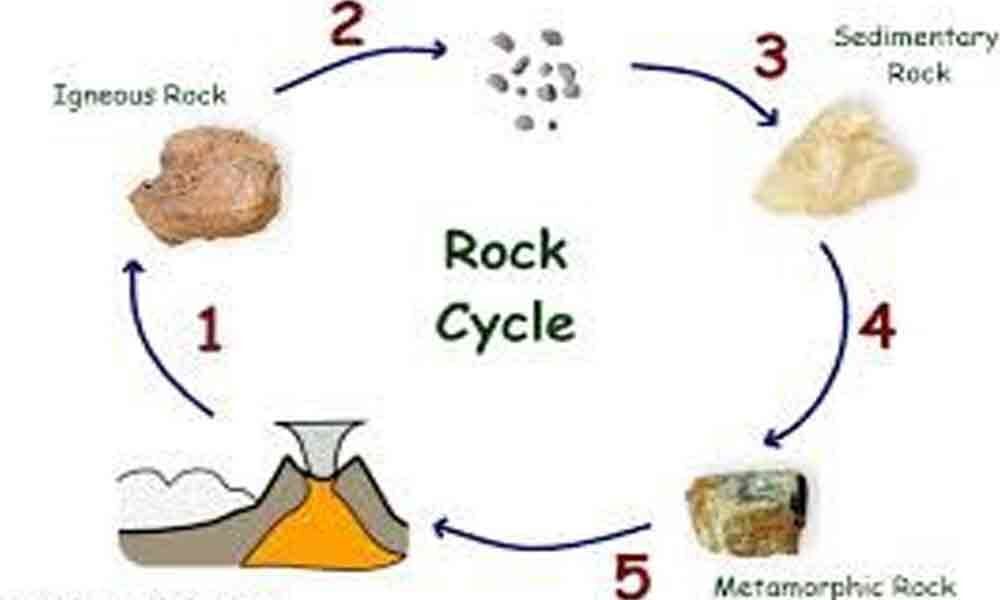
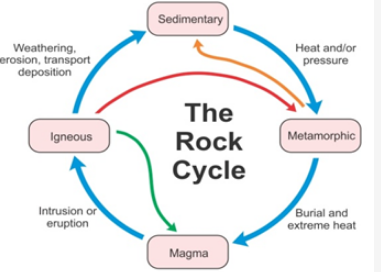


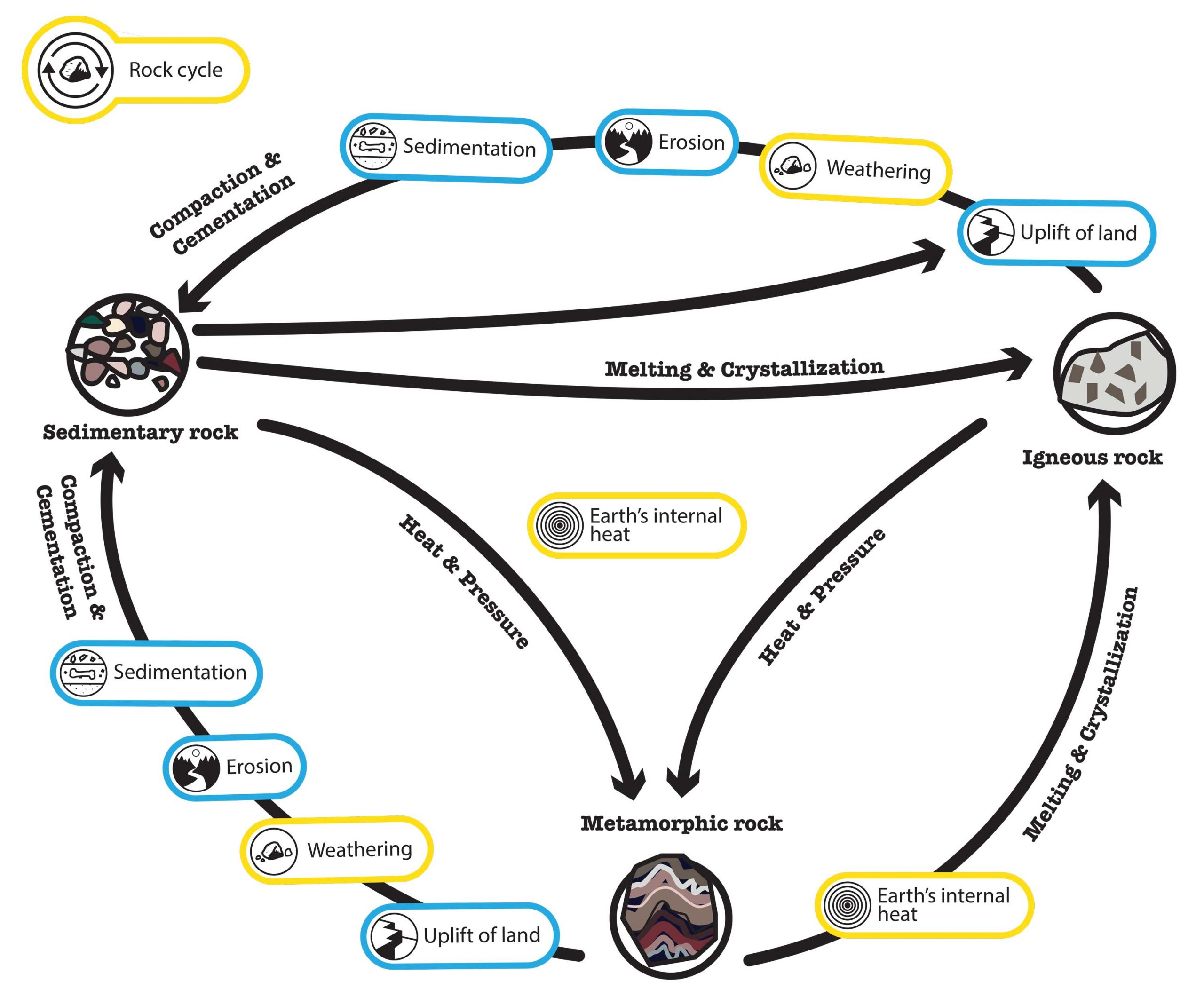
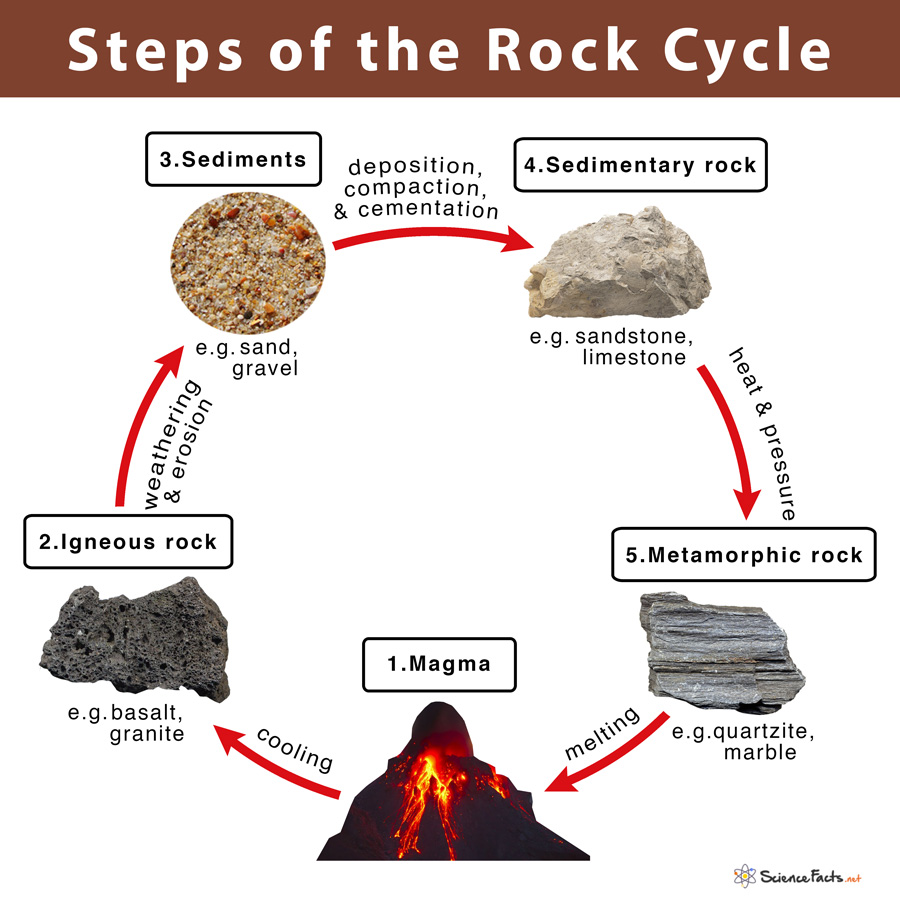
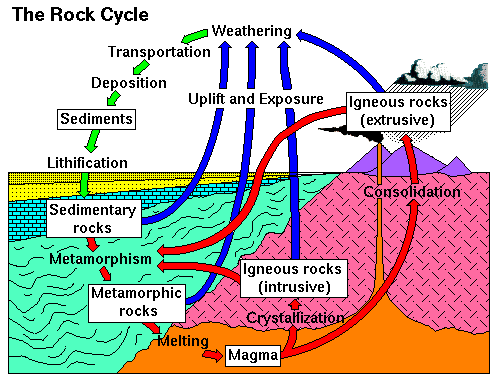
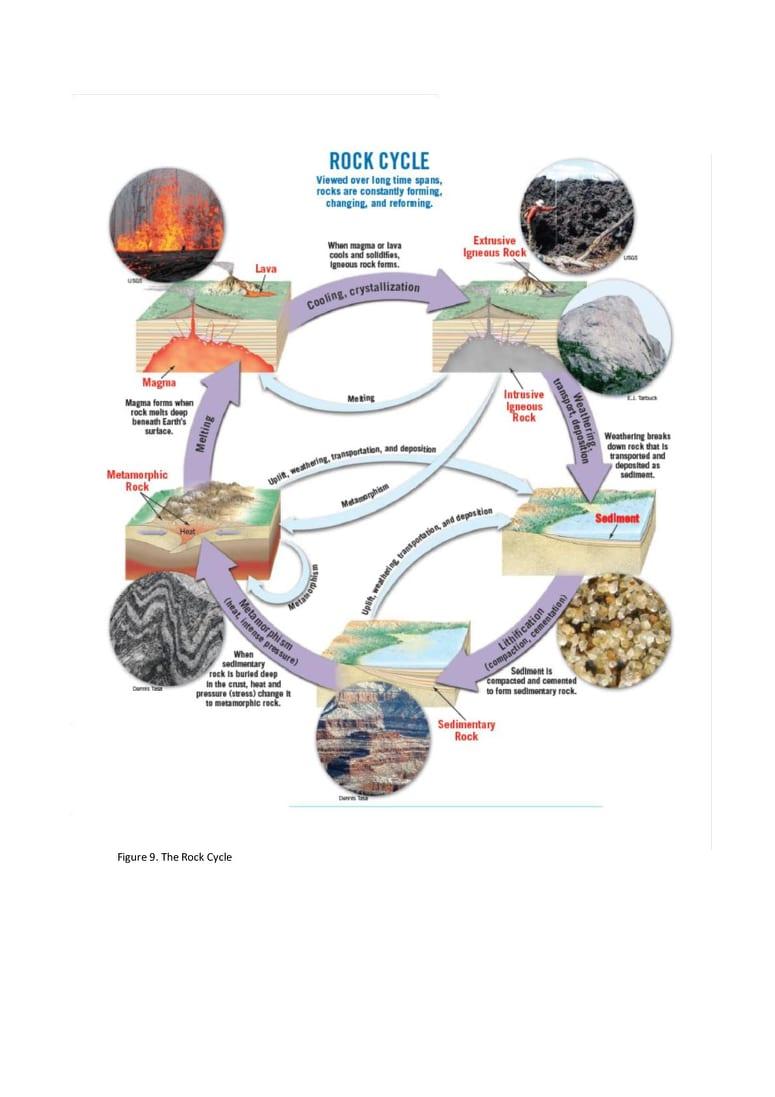

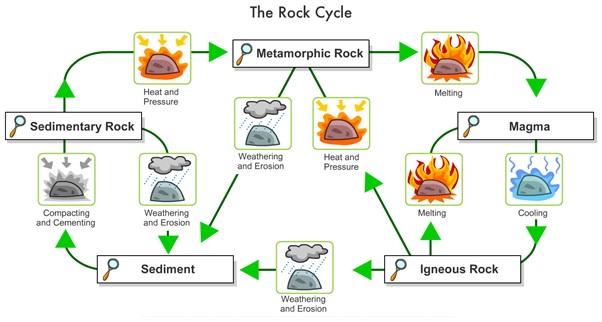
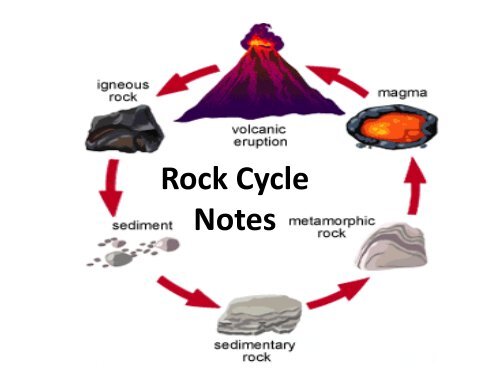


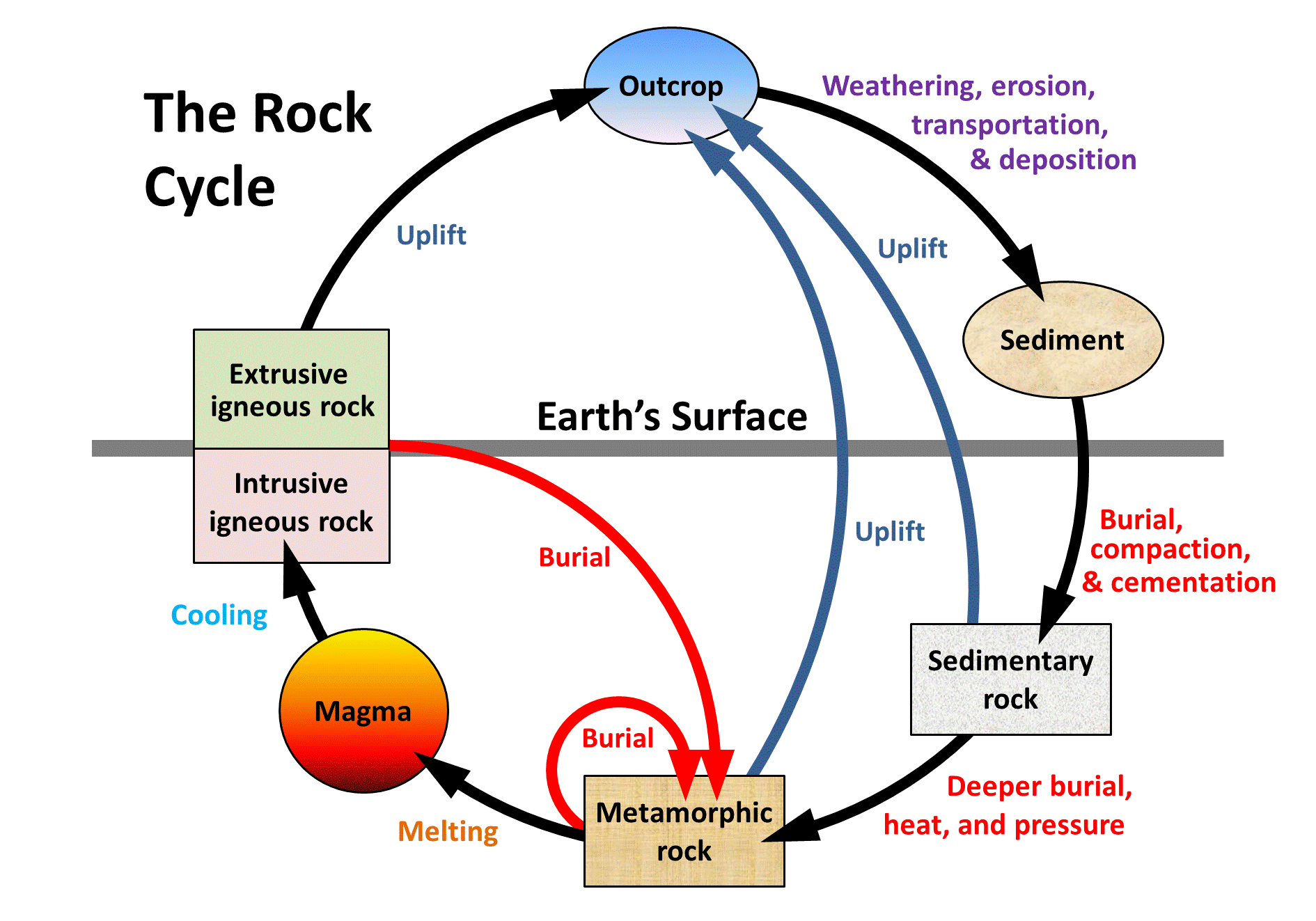

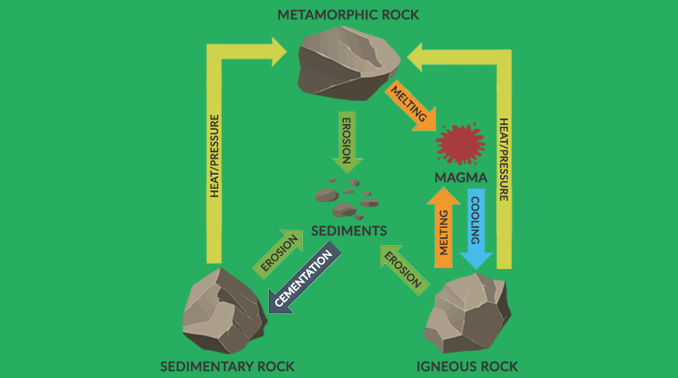

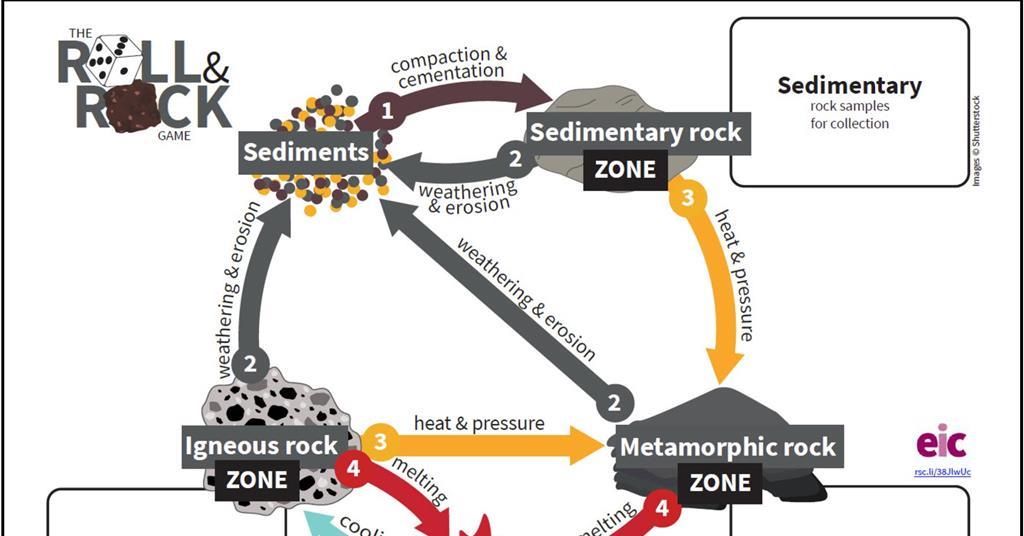


Post a Comment for "42 rock cycle"